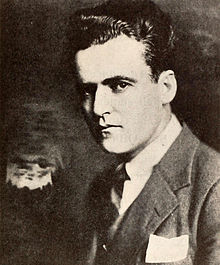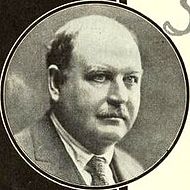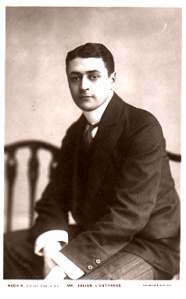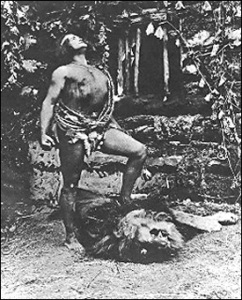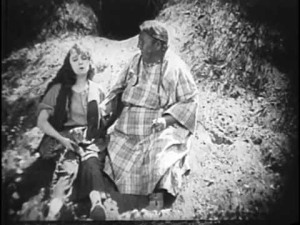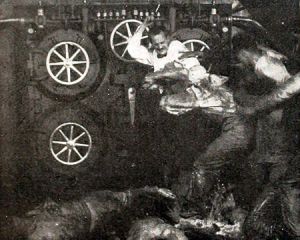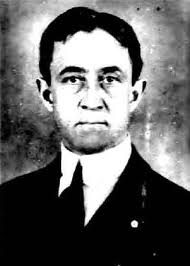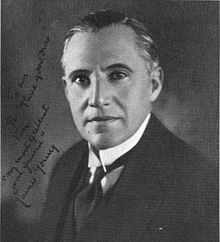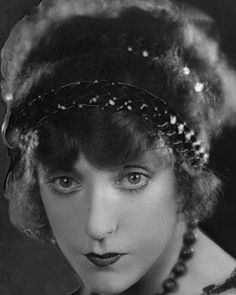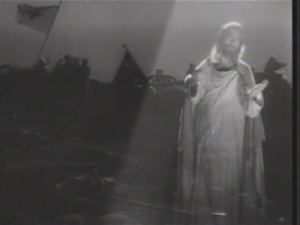1918 was a year of dominated by war and pestilence. As the world seemed to be intent on destroying itself, both the Academy and American filmgoers embraced escapism.
Overseas, the Great War continued to drag on. With no end to the fighting in sight, there were fears that the American public would turn against the war and their elected leaders would withdraw American soldiers from the fighting. The British government, realizing the potential of film as a propaganda tool, contacted director D.W. Griffith and offered to help him make a film. The end result was Hearts of the World, an epic war film that starred Lillian Gish as a French girl who struggles to survive and find true love as the Germans raid her village.
Though Gish would later say that Griffith was displeased with the pro-war tone of Hearts Of The World, the film was a great success at the box office. Or, at least it was until the fighting finally ended on November 11, 1918. Following the signing of the Armistice, war-weary film goers were ready to escape the grimness of conflict.
For Hollywood, 1918 was a year of tragedy. On June 29th, cinematographer John van den Broek, who had just received considerable attention for his work on Paramount’s The Blue Bird, drowned while shooting the film Woman. His body was never recovered.
The first cases of the Spanish flu were reported in January and, by the end of the year, it would spread to every corner of the civilized world. Before the pandemic ended two years later, over 500 million people would be infected and 100 million — 5% of the world’s population — would die as a result. However, because of wartime censorship, it’s debatable how aware most people were of this deadly killer.
The film industry would not hit by the deadly flu until the sudden death of the popular young actor, Harold Lockwood. As a previous nominee for Best Actor, Lockwood was the first Academy Award nominee to pass away. On October 22nd, just three days after Lockwood’s death, actor Julian L’Estrange would also pass away from the flu. Though L’Estrange was never as big a star as Lockwood, he was married to popular actress Constance Collier and the young film industry was hit hard by his death.
With reality so grim, can we be surprised that filmgoers embraced comedy? Among the most popular films of the year was Mickey, in which Mabel Normand played an orphan who, after being raised by coal miners, ended up finding love in New York City. Also searching for love in New York was Mary Miles Minter in The Eyes of Julia Deep.
Mary Pickford returned to the screen in several films. The melodrama Stella Maris featured Pickford in two roles, playing both a paralyzed rich girl and an orphaned servant girl. For those who preferred Pickford in a light-hearted mood, there was Amarilly of Clothes-Line Alley, a take on Pygmalion that featured Pickford as a poor girl learning how to be a refined lady.
However, the most popular film of the year was Tarzan of the Apes, the first film to be made about the legendary king of the jungle. Starring Elmo Lincoln in the title role, Tarzan of the Apes was a huge box office success and provided eager audiences with an escape from reality.
When the Award nominations were announced, Tarzan of the Apes received 7 nominations. Following with 5 nominations were Amarilly of Clothes-Line Alley, The Eyes of Julia Deep, Hearts of The World, and Mickey. Coming in with three nominations was Stella Maris. For the first time, there were two posthumous nominations, John van den Broek for The Blue Bird and Julian L’Estrange, who was nominated for best actor for his performance in the comedy Daybreak.
The Awards Ceremony was held on February 20th, 1919 at the Hollywood Hotel. For the third time in a row, the ceremony was hosted by comedian Roscoe “Fatty” Arbuckle. A speech was also given by Academy President Thomas H. Ince, who earlier that year had been elected without opposition to a second term.
Tarzan of the Apes won awards for best picture, director, and cinematography. Mabel Normand won best actress for Mickey. According to most contemporary reports, the emotional highlight of the evening came when Constance Collier accepted Julian L’Estrange’s posthumous award for best actor.
The Fifth Annual Academy Awards
(Honoring films released in the U.S. between January 1st and December 31st, 1918.
Winners are starred and listen in bold.)
Best Picture
Amarilly of Clothes-Line Alley. Produced by Adolph Zukor. Directed by Marshall Neilan. Artcraft.
The Eyes of Julia Deep. Produced and Directed by Lloyd Ingraham. American Film.
Hearts of the World. Produced by and Directed by D.W. Griffith. Paramount.
Mickey. Produced by Mack Sennett. Directed by F. Richard Jones and James Young. FBO.
Stella Maris. Produced by Mary Pickford. Produced by Marshall Neilan. Artcraft.
*Tarzan of the Apes, produced by Williams Parsons. Directed by Scott Sidney. First National.
Best Director, Comedy
Allan Dwan for Bound in Morocco. Artcraft.
Lloyd Ingraham for The Eyes of Julia Deep. American Film.
F. Richard Jones and James Young for Mickey. FBO.
*Marshall Neilan for Amarilly of Clothes-Line Alley. Artcraft.
Best Director, Drama
D.W. Griffith for Hearts of the World. Paramount.
Marshall Neilan for Stella Maris. Artcraft.
*Scott Sidney for Tarzan of the Apes. First National.
Maurice Tourneur for The Blue Bird. Paramount.
Best Actor
Edmund Burns in Under the Greenwood Tree. Paramount.
Douglas Fairbanks in Arizona. Artcraft.
*Julian L’Estrange in Daybreak. Metro Pictures.
Elmo Lincoln in Tarzan of the Apes. First National.
Best Actress
Lillian Gish in Hearts of the World. Paramount.
Mary Miles Minter In The Eyes of Julia Deep. American Film.
*Mabel Normand in Mickey. FBO.
Mary Pickford in Stella Maris. Artcraft.
Best Writing
Amarilly of Clothes-Line Alley. Frances Marion. Artcraft.
*The Eyes of Julia Deep. Kate L. McLaurin. American Film.
Tarzan of The Apes. Fred Miller. First National.
Best Cinematography
The Blue Bird. John van den Broek. Paramount.
Hearts of the World. G.W. Bitzer. Paramount.
*Tarzan of the Apes. Enrique Juan Vallejo. First National.
Under the Yoke. John W. Boyle. Fox Film.
Best Art Direction
Amarilly of Clothes-Line Alley. Wilfred Buckland. Artcraft.
*Hearts of the World. Frank Wortman. Paramount.
Huck and Tom. Homer Scott. Paramount.
Tarzan of the Apes. F.I. Wetherbee. First National.
Best Engineering Effects
*The Ghost of Slumber Mountain. Willis O’Brien. World Film.
The Heart of Humanity. Allen Holubar. Universal.
Hearts of the World. D.W. Griffith. Paramount.
Tarzan of the Apes. Scott Sidney. First National.
Best Title Writing
The Blue Bird. Charles Maigne. Paramount.
The Eyes of Julia Deep. Elizabeth Mahoney. American Film.
Tarzan of the Apes. Lois Weber. First National.
Films By Number of Nominations:
7 Nominations — Tarzan of the Apes
5 Nominations — Amarilly of Clothes-Line Alley, The Eyes of Julia Deep, Hearts of the World, Mickey
3 Nominations — The Blue Bird, Stella Maris
1 Nomination — Arizona, Daybreak, Bound in Morocco, Ghost of Slumber Mountain, The Heart of Humanity, Huck and Tom, Under the Greenwood Tree, Under The Yoke
Films By Number of Awards Won
3 Awards — Tarzan of the Apes
2 Awards — Mickey
1 Award — Amarilly of Clothes-Line Alley, Daybreak, The Eyes of Julia Deep, Ghost of Slumber Mountain, Hearts of the World
Studios By Number of Nominations
11 Nominations — Paramount
10 Nominations — Artcraft
7 Nominations — First National
5 Nominations — American Film, FBO
1 Nomination — Fox Films, Metro Pictures, Universal, World Film
Studios By Number of Wins
3 Nominations — First National
2 Nominations — FBO
1 Nomination — Artcraft, American Film, Metro Pictures, Paramount, World Film
Trivia:
Tarzan of the Apes is the first adventure film to win best picture.
John van den Broek and Julian L’Estrange are the first two people to be posthumously nominated for an Award.
Julian L’Estrange is the first person to posthumously win an Award.



